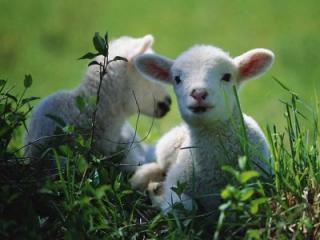Profiting From Animal Welfare
Published on 8 June 2009 in Food, health and wellbeing
Introduction
Animal welfare is a high profile ethical concern for the animals that are under our care and management. In most commonly accepted definitions, animal welfare is taken to cover both the animal's physical and mental well-being.
Animal welfare concerns are often directed at farm animals because of the numbers involved and the nature of intensive farming. Where improved animal welfare practices also increase profit, implementation becomes viable at the farm level and uptake is likely to be greater.
Key Points
Analysis of farm-level trade-offs can identify a range of scenarios from ‘win-win’ (where profit and welfare are aligned) through to ‘lose-lose’. To properly assess the trade-offs involving animal welfare we need to: (i) identify and estimate the ‘hidden’ costs and benefits of different decisions; and (ii) properly understand the ‘animals’ perspective’ and integrate this understanding into economic modelling of decisions.
Research Undertaken
There are a number of well established examples where welfare and profit can be simultaneously improved by addressing system components. Examples of research include:
(a) Dairy cow health: In the past dairy cow breeding was focused narrowly on milk production. More recently as measurements of ‘functional traits’ have become available it has become clear that the narrow focus on breeding for milk yield is unfavourably correlated with reductions in fertility and health traits. This in turn has led to significant changes in the indices developed to help farmers in choosing bulls. Today the most profitable bulls will produce daughters which yield less milk but are healthier and longer-lived. The ‘cost’ of producing less milk in this case is more than matched by the ‘benefit’ of lower costs due to better health and a lower herd replacement rate.
(b) Neonatal survival: Neonatal mortality is often seen to compromise business profit. In sheep production there are many approaches available to farmers to improve lamb survival and currently there is considerable interest in the use of genetics to produce more viable lambs at birth. Farmers may focus on the direct financial benefit of having more lambs to sell but it is also important to note the additional hidden benefits attached to the choice of genotype. In a study of the impact of breed type on labour at lambing, a breed with more viable lambs required less than 20% of the labour input relative to a breed with less viable lambs requiring greater levels of assistance.
(c) Animal temperament: In recent years there has been growing interest in the relationships between animal temperament and other traits of interest to farmers. For example there is a clearly established relationship between beef cattle temperament and meat quality from research in the US and Australia. In pigs it is common for fighting to occur between unfamiliar individuals when mixed into new groups and this can cause physical damage and reduced weight gain and also potentially stress-induced effects on meat quality. As many studies have shown temperament traits to be under genetic control there are potential benefits to welfare and business returns to introducing selection for temperament into farm animal breeding programmes.
There has been less attention on optimising welfare and profit at the level of the production system or farming enterprise. Yet this is essential to view the overall sustainability of the options facing farmers. Economic modelling provides powerful approaches for resolving complex sets of relationships and can be used both to define the decisions that optimise for diverse goals (e.g. profit and welfare) but also the consequences of different decisions.
An example of such an approach comes from a Defra funded project on extensive sheep farming systems. In this study alternative management practices were ranked by farmers and experts for their effect on welfare using a market research technique known as adaptive conjoint analysis. The financial impacts of the different management options were also appraised. According to this analysis feeding was important to welfare but for labour there was a trade-off between welfare and profit. The study concluded that for individual farms it was possible to improve welfare, sometimes for profit and often at little cost through a careful choice between available strategies (Figure 2).

In another Defra-funded project (‘PigSafe’) SAC is using bio-economic modelling to optimise the interests of the sow, the piglet and the farmer. Our analysis so far suggests that there is a relatively small difference in physical and financial performance between crates and a ‘designed-pen’ which provides for improved sow and piglet welfare. We plan to use a combination of design innovations, stakeholder inputs and the bio-economic model to improve the performance of the pen.
Policy Implications
With a considerable gap between public expectations and the reality of farm animal welfare there is a growing need to understand the best policy levers to use in improving animal welfare. There has recently been a great deal of attention focused on ‘market-led’ solutions; for example, through the use of labelling to boost sales of animal products from ‘animal welfare friendly’ systems. The main focus of this briefing paper has been to illustrate that farmers can often benefit and hence afford to deliver more animal welfare. We have used examples to illustrate that improving animal welfare need not reduce business returns and may indeed increase profit. These examples provide a basis for a constructive dialogue with farmers over strategies to improve welfare.
Of course, not all scenarios will both be good for the farmer and the animal, but systematic analysis will discriminate between those animal welfare issues that can be resolved at the farm-level and those where resolution requires decisions taken elsewhere (e.g. by retailers, or through government policy). A key benefit of our approach is that it allows farmers to seize the initiative in the welfare debate.
Author
Professor Alistair Lawrence alistair.lawrence@sac.ac.uk
Topics
Food, health and wellbeing
Comments or Questions







